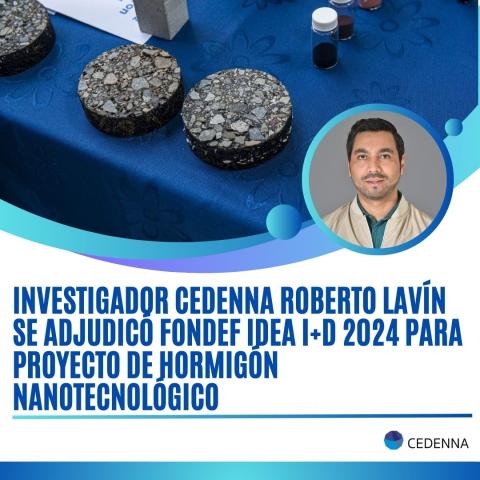
Dr. Roberto Lavín, researcher of the Magnetic Nanostructures Line of the Center for Nanoscience and Nanotechnology (CEDENNA) and Director of the Institute of Basic Sciences of the Faculty of Engineering and Basic Sciences of the Diego Portales University (UDP), was awarded a FONDEF (Fund to Promote Scientific and Technological Development) IDEA R&D 2024 of the National Research and Development Agency (ANID). This financial support, announced on March 25, will support its innovative high-performance concrete project with nanotechnology.
The project entitled “Development of a Prototype of Nanoaddictive for High Performance Concretes for the Formulation of a Constructive Element of Lightweight Structural Concrete for Homes”, aims to generate a dopant based on nanoparticles to improve the mechanical properties of the materials. cementitious. Additionally, it seeks the construction of a nanotechnological structural lightweight panel that addresses the lack of thermal insulation in homes built with concrete.
The problem is in the resistance
Concrete is used as a structural element due to its great capacity to support loads. However, it has very poor thermal insulation, which is why the homes are cold in winter and hot in summer. There are various thermal insulating construction elements, but these do not have mechanical resistance, such as chipboard panels, polymeric insulators, cellular concrete (aerated concrete), etc.
"The problem that remains behind this project is that to date there are no construction materials that are structural (that have high mechanical resistance) and are thermal insulators, since, in general, lightweight materials are thermal insulators and Dense materials are mechanically resistant,” explains Dr. Lavín.
The CEDENNA researcher adds that “this project aims, with very good prospects, to solve this problem and generate lightweight and structural concrete, through nanotechnology and the use of waste from the plastic industry. In this way we contribute in several ways to the decontamination and efficient use of energy and materials.”
How did this project come about?
This project is the product of years of research in which thesis students from the Master's and Undergraduate degrees at the Diego Portales University have participated. Former students from the Faculty of Engineering and Basic Sciences of the UDP and Dr. Manuel Gacitúa, an academic from this campus and CEDENNA researcher, also participate in the research.
Dr. Lavín highlights and recognizes the support of a multidisciplinary team of researchers, engineers and companies associated with the project, as well as the relevance of being selected as the responsible researcher, which reflects the recognition of the quality of the research carried out in the field of nanoscience and nanotechnology.
- Log in to post comments







